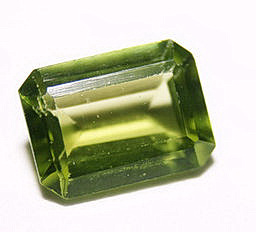
The unique green beach of Papakolea rests on the land of volcanoes on the Big Island of Hawaii. This beach has a rather interesting past as it sparkles with stunning gem sand made of tiny particles of a mineral called peridot.
As a gem variety of the olivine family, peridot is a popular yellow-green gemstone because it’s always born in fire. It is formed deep inside the earth due to the tremendous pressure and heat that exists below the earth’s surface.
The story of Peridot extends all the way back to the formation of our solar system, which means that this gem existed even before the existence of the earth itself. Intriguing, isn’t it?
Well, if you’re mesmerized by this beautiful, fresh-looking lime green gem and are looking to learn more about it, you’ve come to the right place.
This guide covers almost everything you need to know about peridot gems and jewelry.
Tips for Buying Peridot Jewelry
Like other gemstones, peridots are also evaluated based on 4C’s (cut, clarity, color, and carats). Here are some tips to help you get your hands on the best peridot jewelry.
Consider the Quality of the Cut
The cut of a gemstone enhances its visible feature even more and also brings out its hidden beauty. A high-quality peridot cut will also make your stone sparkle evenly throughout with no dull, lifeless, or washed-out areas. If you’re searching for a peridot gem, it is essential that you opt for a well-cut, brilliant stone. When cut to a high standard, this gemstone looks impeccable. Since there isn’t any ‘best’ shape for this gem, you should opt for the shape you like most.
Consider the Clarity
Like all other gemstones, peridots also generally feature inclusions. Since you can find a perfect gem that is free of all inclusions, it is in your best interest to search for a gem that is eye-clean, which means that its blemishes and inclusions shouldn’t be visible to the naked eye.
Consider the Color
Most gemstones are recognized for their unique color. Peridots are also often known for their lime green color, but some peridots can have different tints and hues. The most desirable peridot is the one with a beautiful and pure lime green color and is free of any brown or yellow hints. It’s best to avoid brownish peridot gems since they are typically considered low quality and are very less appealing.
Choose the Metals Wisely
If you’re buying peridot jewelry, you’ll want to ensure that you choose a metal that brings out the best in your gem. Generally, yellow gold helps highlight the stunning features of peridot over other white metals. Rose gold also brings out the color of a peridot gem, making it a unique choice for rings and other jewelry. Also, white gold and other rhodium-coated metals often cause pits in peridot gems.
How to Determine if a Peridot is Real
As with other gems, peridot can also be occasionally faked. A fake or imitated peridot is typically made from glass, making it easier to determine its imperfections and set it apart from real ones.
Here are a few ways you can use to authenticate peridot.
Perform an Eye Test
One of the best ways to detect whether peridot is fake or real is to have a close look at its color. Genuine peridots have a pure green color with brown or yellow tints. If you notice any other tints besides these two colors, the chances are that your gem is an imitation.
Check for Imperfections
According to the Mohs scale, peridots have a 6.5-7 hardness rating, which means that it is possible to scratch this gem easily. Take a good look at the gem to look for any scratches or cracks. If the stone looks too perfect, it’s probably unreal.
Check for Double Refraction
Peridots have a high level of double refraction, which means that you can see two of each pavilion’s facets when examining the gemstone closely. To check for double refraction, hold up the gem against a light.
Look for Inclusions
Natural peridots almost always have some type of inclusions. While some inclusions are visible to the naked eye, others can be spotted under magnification. However, if you don’t see any inclusions but notice bubbles instead, then there are chances that the peridot is fake.
Check Its Color Under Different Lhigting
Peridots are unique gemstones that don’t change color under light. Genuine peridots will remain the same color despite being exposed to natural or artificial light. Fake peridot, however, will display a different color.
Caring for Peridot
Peridot ranks only 6.5 on the Mohs scale of hardness, deeming it softer than many other gems. Due to its low hardness, this gemstone requires a considerable amount of proper care and maintenance.
Firstly, it is recommended to store your peridot jewelry in a separate box or pouch when traveling to keep the gemstone and the metal from scratching each other.
Secondly, the peridot is incredibly vulnerable and sensitive to rapid temperature changes. So, you must never have it steam cleaned.
Lastly, like all other gemstones, it is recommended to avoid wearing peridot jewelry when applying cream or lotions. When it comes to cleaning the gem, it is best to use mild dish wash soap and a soft brush to get rid of accumulated dust.
Why We Love This Gem
Peridot has long been associated with sunlight. A major reason behind this is the way this beauty shines green-gold under the sun. In fact, many Egyptians would refer to peridot as the “gem of the sun.” The yellow-green color of peridot is especially unique and looks amazing when paired with yellow gold. Simply put, peridot is like the last squeeze of lime in a cocktail that brings and binds everything together.
To conclude, peridot is a great gemstone that requires you to be mindful before making any purchase decisions.
